Restoring stepwells doesn’t only mean repairing stone and clearing water. It means reviving a relationship—with water, with history, and with one another.
about the writer
Siya Bhatia
Siya is a student and environmental enthusiast currently studying at Indian Institute of Science,Education and Research,Bhopal. She focuses on integrating traditional water systems with modern resilience strategies, with a particular interest in Rajasthan’s stepwells. Siya’s work aims to bridge cultural heritage preservation with climate adaptation, advocating for community-driven solutions to water scarcity.
Some places don’t shout. They don’t demand attention. Instead, they sit quietly, holding stories in the stillness of their steps, waiting for someone to ask.
In the Indian city of Alwar, Rajasthan, nestled near the Aravalli hills, such places still exist—often hidden behind crumbling walls or trapped within rising neighbourhoods. Among them are two stepwells: Moosi Rani ki Chhatri and Modi Bawri. Once vital to the city’s water system and social rhythms, today they lie in different states of neglect. But they are not forgotten—not entirely.
This essay is about those places. About the memories that cling to them. About the quiet wisdom they carry in their stones.
Water wisdom in an arid land
The State of Rajasthan has always known water scarcity. With over 80% of its land affected by groundwater depletion, communities here have long adapted to the rhythms of drought and monsoon. Among the most ingenious of these adaptations were stepwells—locally known as baolis or baoris—designed to collect rainwater, recharge aquifers, and provide cool, shaded spaces for rest, gathering, and worship. As a famed proverb in the region goes, “बावड़ी बनवाना पुण्य का काम है।” (Building a stepwell is an act of virtue.)
Alwar, with its sandy loam soil and seasonal streams, became home to many such structures. Built deep into the earth and adorned with stone pavilions and carved arches, stepwells served as both ecological and cultural anchors in the city.
The history of stepwells in India spans over a millennium, with some of the earliest examples dating back to the 6th century CE. Their use flourished between the 10th and 18th centuries, particularly in arid regions like Rajasthan, where rainwater harvesting was essential to survival. Stepwells were often commissioned by kings and queens, nobles, or wealthy merchants—not only as water infrastructure, but also as acts of public good. One notable Persian-Mughal poet, Abdur Rahim Khan-i-Khana, who himself built stepwells writes,
“रहिमन पानी राखिए, बिन पानी सब सून। पानी गए न ऊबरे, मोती मानुष चून॥”
(Rahim says, preserve water, for without it all is void.
When water is lost, pearls, people, and lime are lost too.)
In Alwar, many of these structures were connected to temples, trade routes, or urban expansion. They reflected an ethos of care—where engineering, aesthetics, and spirituality met in stone.
Moosi Rani ki Chhatri: A Monument Remembered
At first glance, the Moosi Rani ki Chhatri stepwell still holds a regal presence. Flanked by red sandstone pavilions and a white marble chhatri, its architecture whispers of royal patronage and elegant utility. Descending its broad steps, one can see the algae-covered water and bits of floating waste—stark reminders of its current state.
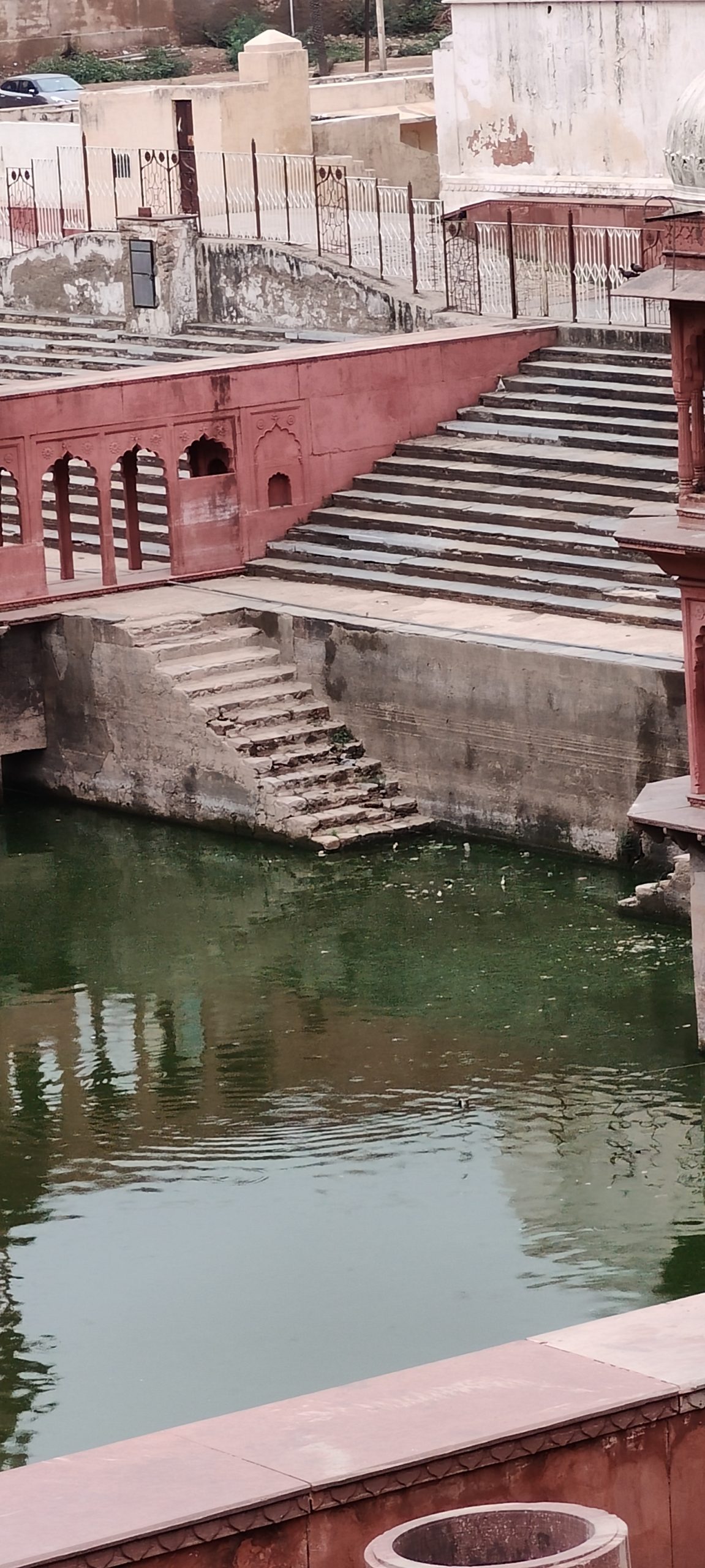
The Moosi Rani ki Chhatri complex, built in 1815 by Maharaja Vinay Singh, stands as both a cenotaph and an architectural gesture of remembrance. The red sandstone lower pavilion honors Maharaja Bakhtawar Singh, while the upper white marble structure commemorates Queen Rani Moosi, who performed sati upon the king’s death. Carved footprints within the chhatri continue to draw quiet reverence.
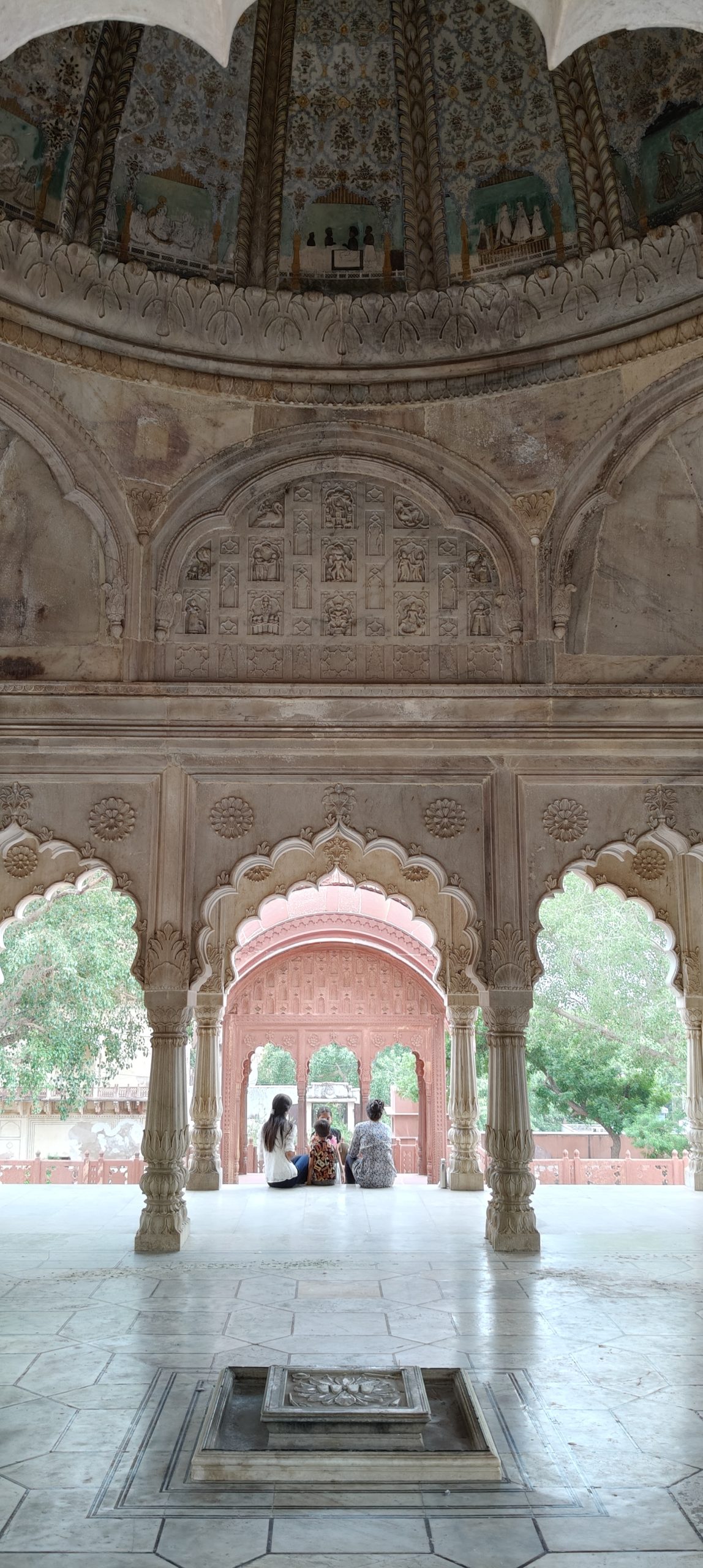
An older man, now serving at a nearby temple, traced the stepwell’s role in the city’s water system. “Rainwater would run down from the hills and collect here,” he said. “It was once the main water source.”
The stepwell complex is part of a sophisticated water management system. Rainwater from the nearby hills flowed down through a series of channels—from Kishen Kund at the top through three check dams and five intermediate storage points—finally collecting in the Sagar Kund stepwell at the base. This design reflects the fusion of royal devotion and hydrological ingenuity. As James Tod once wrote, “No monument speaks more gently of its patrons than the stepwell, where stone yields water and shade to the weary.”
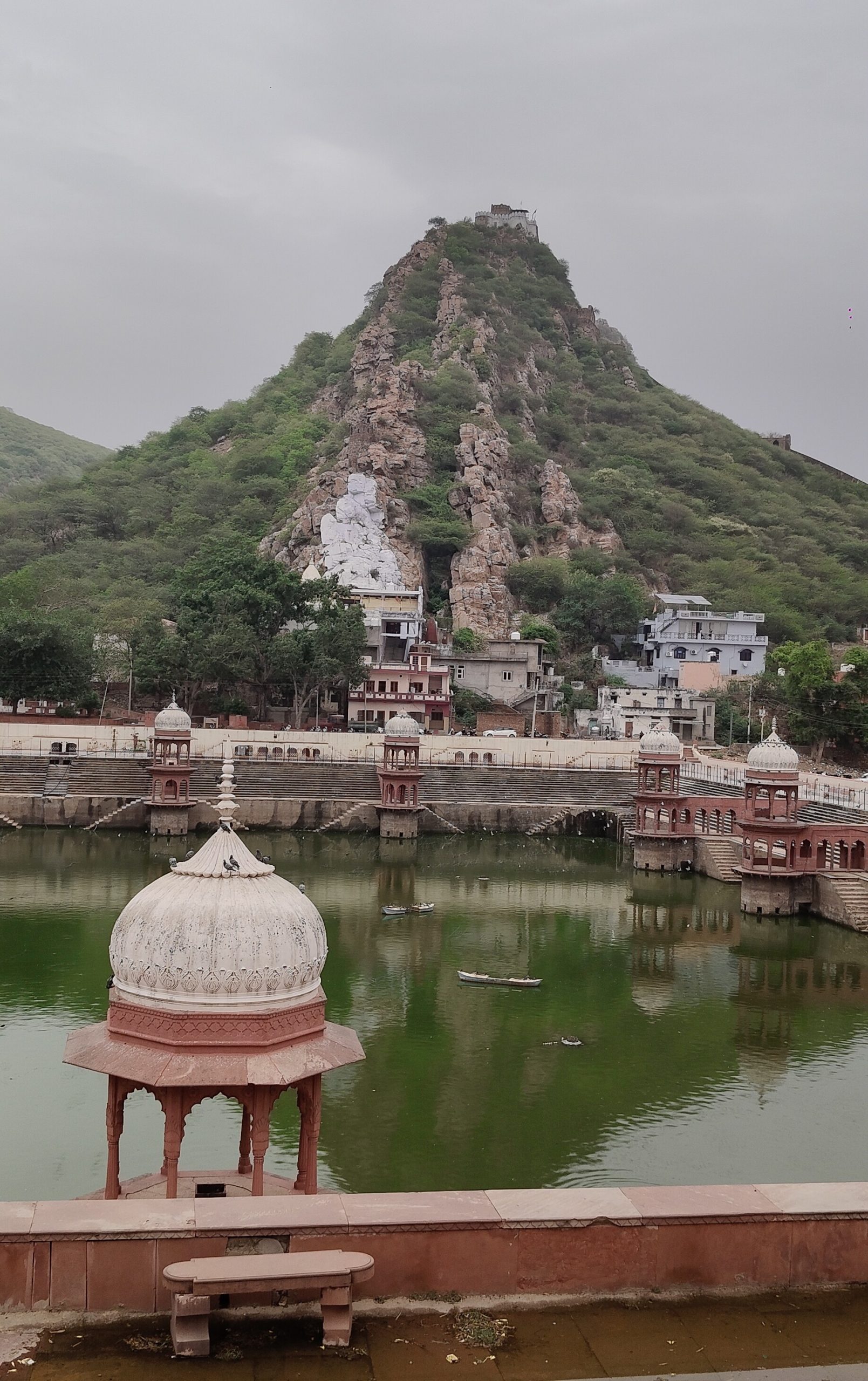
And yet, local residents remember more.
A woman in her 40s, who has lived nearby for decades, recalled hearing tales of queens bathing here, accompanied by attendants. Her husband added that in his youth, the water was so clean it was considered sacred—nothing was allowed to fall into it. Today, even flour is thrown in to feed fish, a well-meaning act that contributes to pollution.
Others echoed similar feelings—of reverence, nostalgia, and frustration.
“बावड़ी का जल ना दिखे, मन प्यासा रह जाये।”
(The water in the stepwell is unseen, and the heart remains thirsty.)
— Bhakti poetry, Meera Bai tradition
Though some restoration efforts were undertaken—most recently by the Environmentalist Foundation of India (EFI) and others in 2022 under the Jal Jeevan initiative—community voices still note that these actions are sporadic and often short-lived. Filters installed to block the inflow of waste body lie unused. Fountains installed to circulate the water operate briefly every day.
What was once civic pride is now a passive backdrop—a place seen but no longer served.
Modi Bawri: The stepwell nearly erased
If Moosi Rani ki Chhatri is remembered, Modi Bawri is nearly erased. Hidden in the crowded lanes of Sanjay Nagar, within the city, this stepwell is all too easy to miss, as it stands buried beneath decades of urban neglect. Overgrown vegetation, heaps of garbage, and encroaching walls cloak its once-graceful arches.
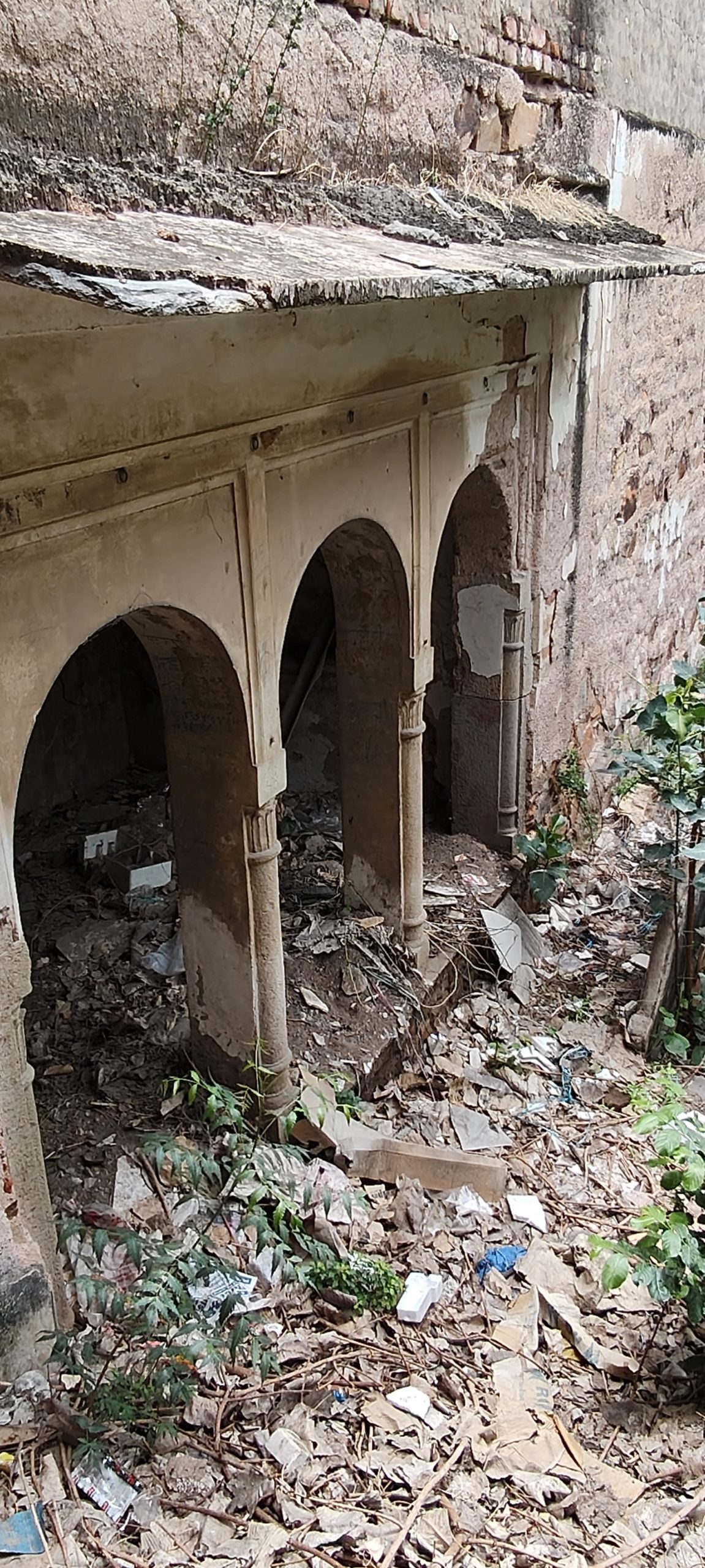
Detailed digital records about Modi Bawri are scarce, but local oral histories provide insight. A market worker, now in his 40s, recalled the place from his childhood. “It was a royal gift,” he said. “People used to come here, but now they’ve forgotten.”
An elder who lives just 100 meters away spoke on how the stepwell was once connected to the city’s waterworks. He shared a story passed down from his grandfather—about how a royal accountant convinced the king to switch from ghee to oil in the ceremonial lamps, and the money saved from this funded construction of this stepwell. It was a small act of fiscal creativity in a drought-prone land, remembered as both frugal and farsighted.
Another elderly shopkeeper noted that its decline accelerated as private ownership of surrounding land took hold, making restoration administratively and logistically complicated. All interviewees expressed a quiet hope—if someone begins, others may follow. But no one wants to begin alone.
Stepwells as social and ecological commons
Stepwells offered more than water. They offered shade, sociality, and solidarity. In patriarchal contexts, they gave women a rare public space. They supported livelihoods—potters, washermen, barbers—and welcomed travellers. Their cool interiors buffered extreme heat; their design filtered sediment and allowed percolation.
These stepwells were sources of water, moderated heat, and acted as a social space gathering people. These were engineered for mitigating drought, designed for the community, and built with ecological foresight.
Today, their decline is not just material—it is symbolic. It reflects what happens when the rhythms of community life are broken, when civic responsibility is outsourced, and when memory fades without stewardship.
But they are not beyond saving.
NGOs Speak: Reviving stepwells with people power in Alwar
In Alwar, the revival of ancient stepwells is no longer just a conservation effort—it has become a quiet movement, led by grassroots NGOs and anchored in community trust. For leaders like Manohar Lal Gaud, the process begins not with concrete or funding, but with relationships.
“We start with Anganwadi workers, form self-help groups, and hold village camps,” he explains. “The motivation has to come from within.”
Most organisations favour face-to-face connection over digital reach.
“Social media helps, but we focus on impact on the ground,” says a member of Arti Shiksha Samiti.
Others blend both.
“One emotional video—just birds sipping from a cracked pond—was enough to stir an entire village into action,” recalls Gokul Saini from Yuva Jagriti Sanstha.
The Tarun Bharat Sangh, one of the region’s most recognised environmental organisations, believes that stepwells survive not by stone alone, but by stewardship. They conduct year-round street meetings and local assemblies to sustain awareness and build ownership.
“We don’t just repair stepwells,” one volunteer says. “We help people believe they can protect them.”
From digging recharge pits and encouraging rooftop rainwater harvesting, to reviving folk practices and introducing environmental values in schools—the strategies are deeply people-centric.
In their eyes, stepwell revival is not just about water—it’s about memory, pride, and belonging.
“You can’t restore nature,” one member says, “without restoring people’s connection to it.”
A closing reflection
Restoring stepwells doesn’t only mean repairing stone and clearing water. It means reviving a relationship—with water, with history, and with one another.
Local governments have a role to play—but so do residents, schools, artists, planners, and storytellers. Awareness campaigns, guided walks, and student-led projects can foster new care.
“मिट्टी में दबी है जो आवाज़,
वही कल बनेगी फिर से साज़।”
(The voice buried in the soil today
May yet return as music someday.)
— Keshavdas of Orchha, early 17th century
Because beneath the algae and dust, the stories are still there. The silence isn’t empty—it’s waiting.
Arvind Lakshmisha and Siya Bhatia
Bangalore and Alwar



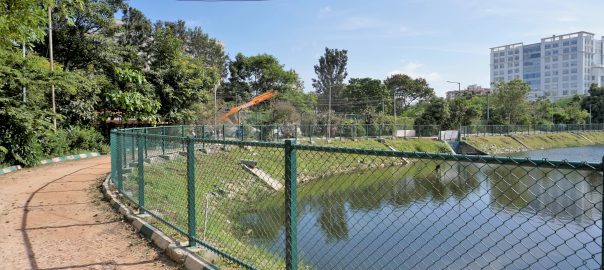


Leave a Reply